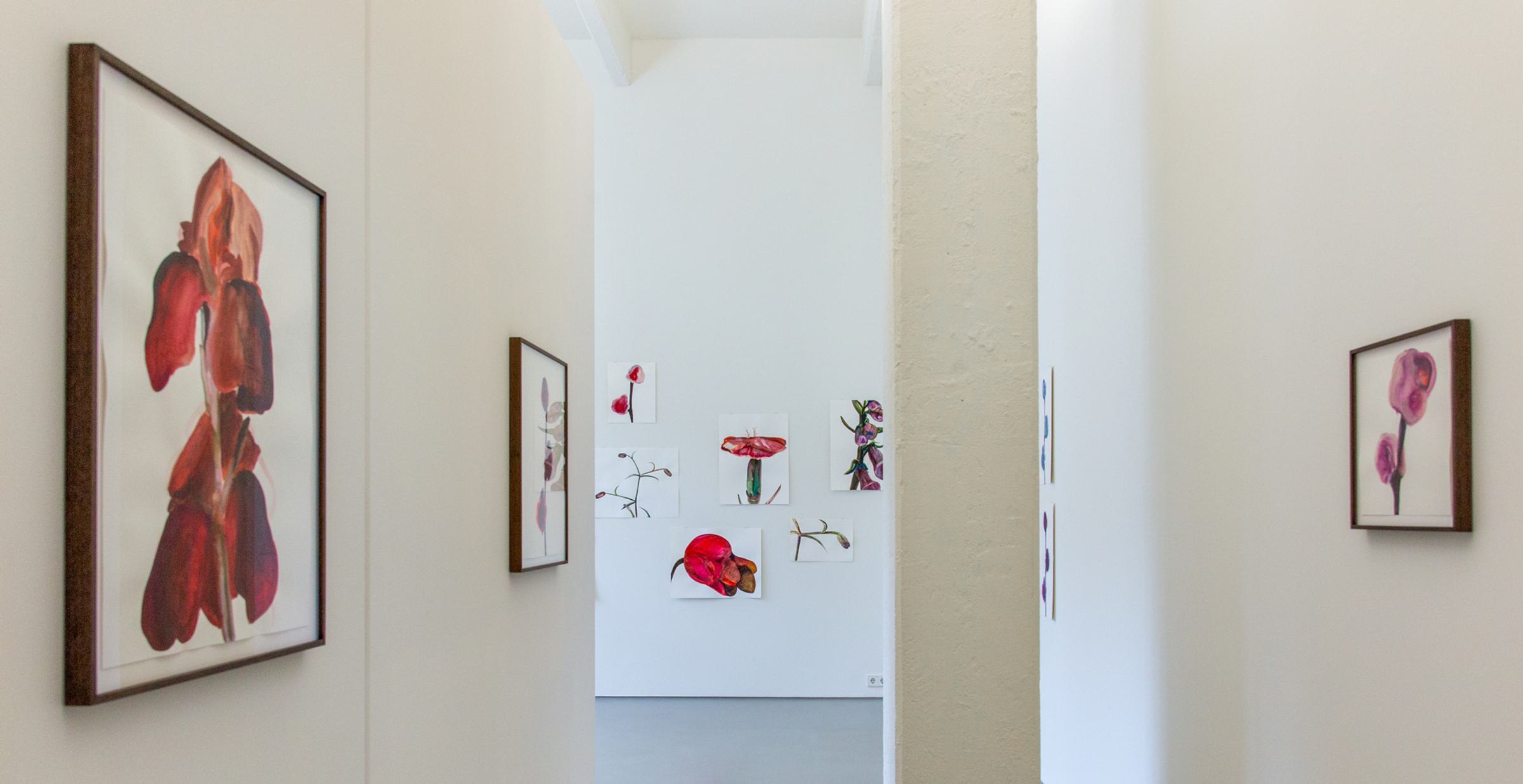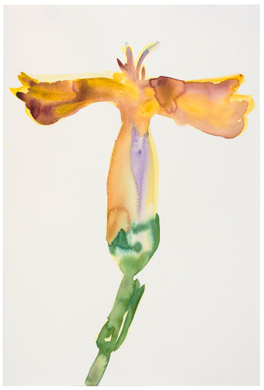In the work of Ina van Zyl, flowers are often not simply flowers. They have been given titles such as Schoot (Lap), Envy or Litlle Orgasm; aside from being beautiful and seductive, they are also slightly awkward. As though concealing something that is being revealed only by degrees: desire, shame, pride and sensuality. That feeling is certainly true of her new series Lente (Spring), watercolours of various types of flowers that she produced during the lockdown. More than anything the series shows that the power of that particular spring could not be suppressed. The watercolours glow as celebrations of life and now, as an ensemble, hang happily and provocatively on the wall under the poetic yet ambiguous title light as a needle.
Van Zyl calls the flowers by their names: lily, peony, carnation. But their ambiguity is merely heightened by the technique of watercolour. Take the iris, for instance. She paints this in voluptuous blossom, in countless shades of red and yellow, its 'crêpe-paper' petals taking on sculptural forms as transparency and weight coincide. The petals hang outward like voracious tongues but, once withered, they shrivel up and droop with an intensity of colour. "If I only see flowers as being beautiful, there's little I can do with them," Van Zyl has said before about her fascination with flowers. "But when there's friction, things get interesting. Take the flower buds: they're lovely, but at the same me I have the urge to pinch them to pieces."
Vulnerable and powerful, untouchable and yet so, such contrasts are brought together by Van Zyl to define the image. Lilies still in bud form, the stems making elegant but unexpectedly distinct angles. And carnations petals popping through the bud like a small eruption while the bud remains intact: a sensual image suggesting the fusion of the masculine and feminine.The same holds true for the warm and radiant colours. Van Zyl stirs them up and knows precisely when to rein them in. They flow together, blend and sometimes disperse like oil and vinegar along frayed contours. They are dark and light, harsh and gentle, glistening and dull. They decelerate the eye and force it to concentrate. At such moments paint and flower seem to become one.
Text: Esther Darley.
Translation: Beth O'Brien

